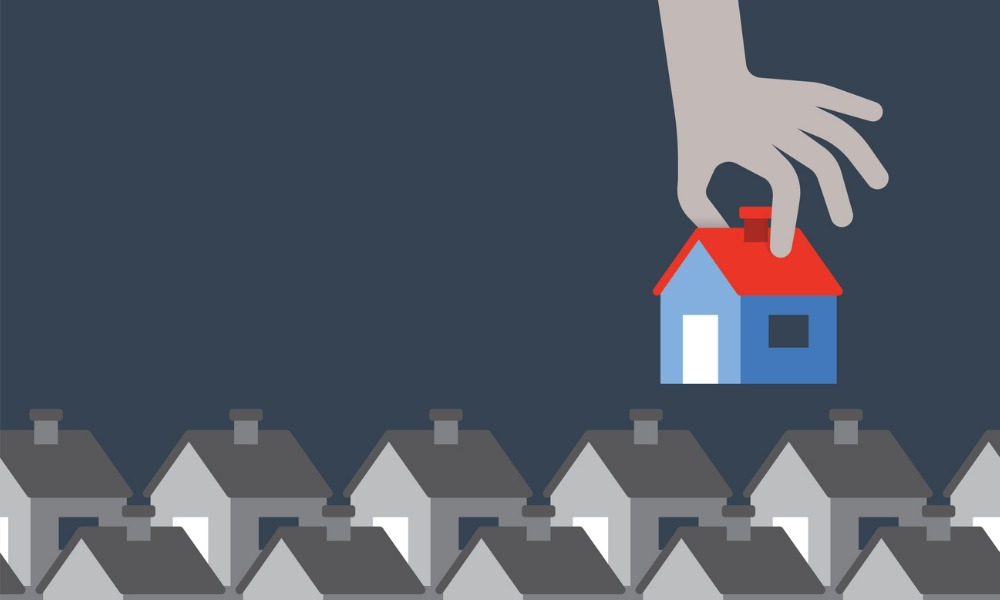Ongoing supply shortage is exacerbated as people stay in their homes longer than in years past

Economists at First American Financial Corp. have identified a pair of trends that are combining to slow housing market normalization.
What are those two trends? Think rate locks and seniors. “Many existing homeowners are rate locked-in to historically low, sub-3% mortgage rates, and now that rates are rising, there is a financial disincentive to sell their homes and buy a new home at a higher mortgage rate,” First American’s chief economist, Mark Fleming, said in explaining the first trend. “The golden handcuffs of low mortgage rates prevent more supply from reaching the market.”
The second trend: “Seniors choosing to age in place, rather than downsize or move to another home, further limits housing supply,” Fleming explained. He cited a 2019 study from Freddie Mac positing that if adult born between 1931-1959 behaved like earlier generations, they would have released nearly 1.6 million additional housing units to the market by 2018. “As seniors continue to choose to age in place, there will be fewer existing homes available for sale,” Fleming noted. “And, with many of these senior homeowners also locked into historically low mortgage rates and historically high levels of equity, it’s more likely they will renovate the home they currently own than list their home for sale and move.”
Key findings from First American’s May 2022 potential home sales report buttress the two-pronged observation:
- Potential existing-home sales decreased to a 5.62 million seasonally adjusted annualized rate (SAAR), a 2.0% month-over-month decrease.
- This represents a 61.2% increase from the market potential low point reached in February 1993.
- The market potential for existing-home sales decreased 10.5% compared with a year ago, a loss of 660,395 (SAAR) sales.
- Currently, potential existing-home sales is 1,171,000 (SAAR), or 17.2% below the pre-recession peak of market potential, which occurred in April 2006.
“The market potential for existing-home sales in May fell 2% to 5.62 million at a seasonally adjusted annualized rate (SAAR), compared with last month, and is 10.5% lower than one year ago,” the economist said. “Yet, the market potential for home sales remains 2.5% higher than May 2019, before the pandemic hit.”
Read more: Fed interest rate hike – reaction pours in
Continually rising mortgage rates only exacerbate the problem, Fleming suggested: “While rising mortgage rates will continue to cool demand, it will also keep existing homeowners locked into their homes,” Fleming said. “You can’t buy what’s not for sale - and existing homeowners have little incentive to relieve the supply pressure, keeping a lid on housing market normalization.”
To buttress his point further, Fleming expounded on the disincentive to sell homes amid rising mortgage rates. “Home purchase demand is declining as mortgage rates rise alongside still-strong house price appreciation. While a decline in demand may reduce the pace of sales and lead to an increase in inventory, existing homeowners are less inclined to sell their homes as mortgage rates rise. Historically, nearly 90% of total inventory is existing-home inventory, and existing homeowners are staying put. Increasing the supply of homes for sale is key to slowing house price growth and restoring balance to the housing market.”
Homeowner staying in place certainly isn’t helping, Fleming said: “The amount of time a typical homeowners live in their home increased 2% from one year ago, and 0.4% compared with last month, which was the largest month-over-month increase since August 2020 and contributed to a loss of 15,500 potential home sales compared with last month,” Fleming said. “Since existing homeowners supply the majority of the homes for sale, and homeowners are staying put longer, the housing market faces an ongoing supply shortage.”
Read next: Fed rate hike pushes mortgage rates to highest level in over 13 years
The situation is a far cry from the time prior to the Great Recession 15 years ago, he noted. “Before the housing market crash in 2007, the average length of time someone lived in their home was approximately five years,” he said. “During the aftermath of the housing market crisis between 2008 and 2016, the average length of time someone lived in their home grew to approximately eight years. The most recent data shows that the average length of time someone lives in their home recached a historic high of 10.6 years in May 2022.”
So what does this all mean? “A moderation of house price growth will signal that balance is returning to the housing market,” Fleming explained. “Yet, more housing supply is critical to meaningful moderation in house price appreciation. While rising mortgage rates will continue to cool demand, it will also keep existing homeowners locked into their homes. You can’t buy what’s not for sale – and existing homeowners have little incentive to relieve the supply pressure, keeping a lid on housing market normalization.”



